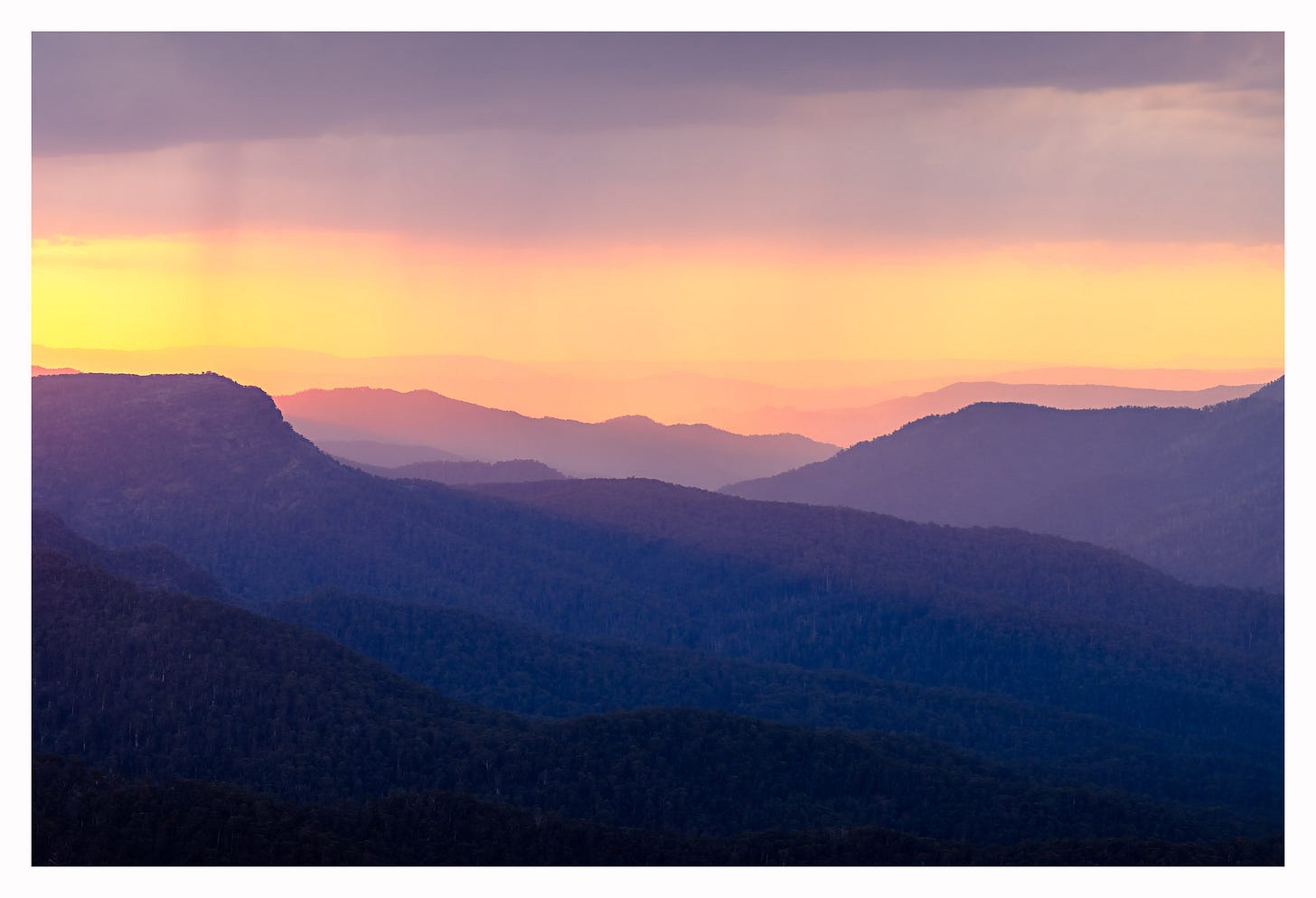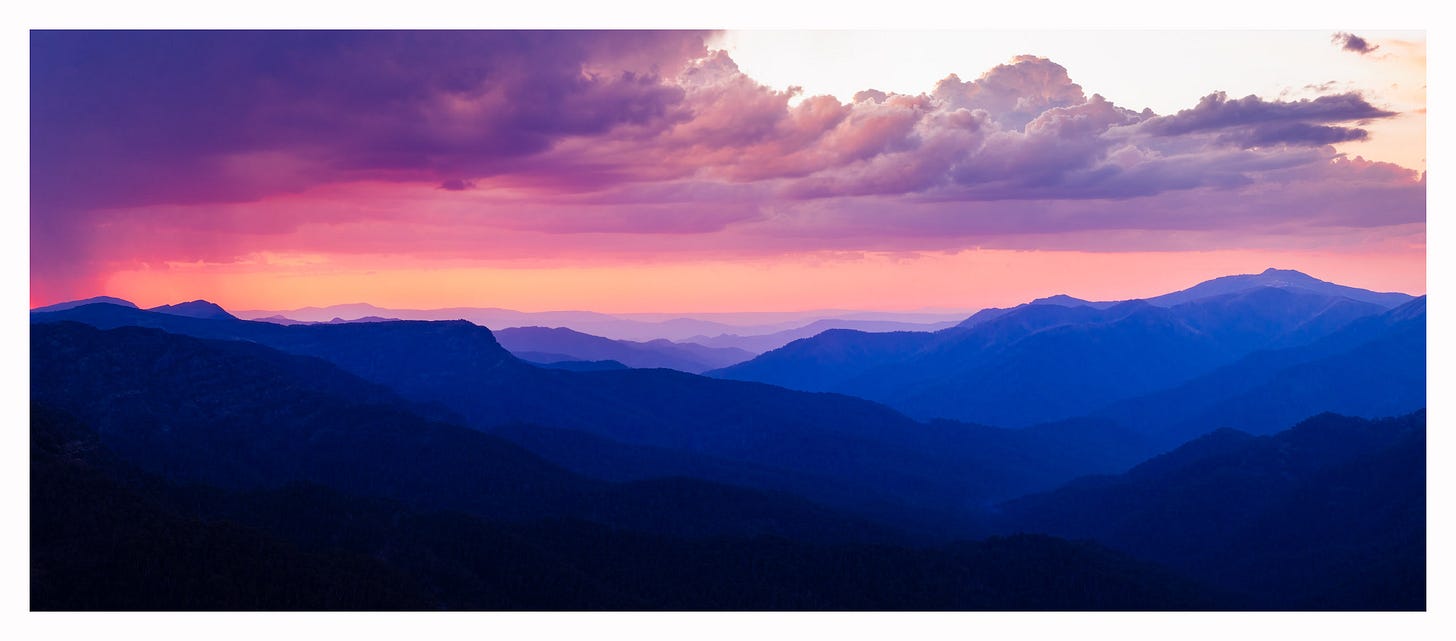Hi, I am a landscape and nature photographer based in Melbourne, Australia and enjoy using my camera to explore our remaining wild places and better connect with nature.
There are few artists who do not want others to view and appreciate their work. They want their art to have an impact on the viewer - generally, it is true to say that the more impact the better.
So how do we manipulate content (what’s in the picture) and composition (the relationship of all the elements in a frame) to capture a specific moment in time to elicit the desired impact in the viewer?
In a previous post (What makes a winning image) I talk about the three elements that I think are required for an image to progress through competitions – strong foundations, good light, story. In a competition, in front of judges who are visually literate and see a lot of images, the image needs enough instant attraction to progress through the early rounds based on a momentary inspection, and in the final rounds, enough substance to withstand close engagement and find advocates in judges who will argue in favour of it.
I recently came across a YouTube video by Sean Tucker (that I would highly recommend you watch – What Makes a Great Street Photograph?) in which he talks about the idea (which he attributes to Joshua Jackson) of layers in an image. Although Sean applies this idea to street photography, I think it can apply to any genre.
He is not talking about the kind of layers seen in the images I’ve included in today’s post. Instead, they are ways to build an image with different elements that build substance in the image and make the viewer want to come back for more.
Sean talks about four layers – the more layers, generally the more interesting the image.
The first is the Aesthetics layer, which includes consideration of exposure, light and shadow, interesting composition, good colour theory, and so on. It is the combination of technical skills and creative eye that create well balanced images. Sean calls images that have just this layer visual notes – sketch images used to practice composition and exposure skills and are fine for social media, but they are far from being great images.
The next layer is the Subject layer, where the image includes someone or something which is worthy of our attention. This one layer can make for an interesting image if the subject is strong enough (for example, for journalistic or documentary purposes), but this is rarely the case.
While I have difficult photography sessions where I have struggled to find an aesthetically pleasing composition or an interesting subject, in most cases I will find images to make with at least one of these two layers. Like Sean calls them visual notes, I console myself by calling these sessions a ‘scouting mission’ and just enjoy the experience, both the process of taking photos and being out in nature. At least, I have learnt a bit more about an area, where I can come back to search for an interesting composition or return to an interesting subject in more favourable conditions.
The third layer is the Moment layer where something is occurring, some action which is worth our attention. Sean refers to the ‘Tap the shoulder test’ where the thing happening that would be worth tapping the shoulder of friend to point out. In the grand landscape like the example above, it is often the light that creates the moment of drama. This moment can be much more challenging to find in more intimate landscape scenes, where the moment is quieter, more reflective, in pulling the viewer in.
Finally, there is the Alchemy layer – where everything comes together to create the magic of a compelling image. This layer is beyond the control of the photographer although, in the sense that the more you practice, the luckier you get, I have to believe that the more images you create with the first three layers, the more likely you will get these magic images.
Sean also makes the point that this alchemy can grow over time as the scene gains historical interest. I am certainly aware that some of the landscapes I am photographing will be radically transformed in the decades to come and could well be seen in a very different way in the future.
To create an image with all four layers is, as Sean says, the stuff of legacy. Even the greatest of photographers will produce a few in a lifetime.
The images I’ve posted today bring back incredible memories. There is something special climbing to the top of a mountain to watch the world fade, layer after layer, into the far distance. These images are all the more special for the challenges of the conditions, the length of the walk with a heavy pack, the emotional experience of being there.
I feel privileged to have been in a position where I can capture these moments of stunning beauty. The second image, for example, was taken in Tasmania on day 6 of an 8-day hike, climbing solo up The Acropolis through flurries of snow and high winds - an amazing experience.
But with this emotional connection, it is hard to separate the experience of taking the photo and the impact of the image on its own. It can be difficult to describe the impact of each of these images (and why), without reference to the experience of making the image. This idea of layers provides a structured way of analysing my own photos and articulating the elements that contribute to impact.
With this structure, I can more easily talk about what works and what may be missing. I think most of these images are strong in two layers, maybe three. What do you think? How many layers do your favourite images have?






Great piece James. I’ve been enjoying your lovely city the last couple of days both on the street and in the sky (open door heli photoshoot)
Gorgeous! Mountain layers in the distance are one of my favorite things to capture. Your sunset captures have magnificent color.